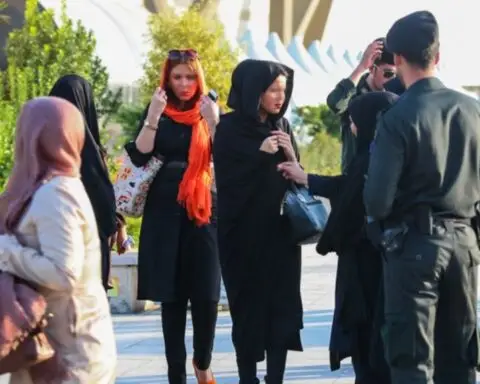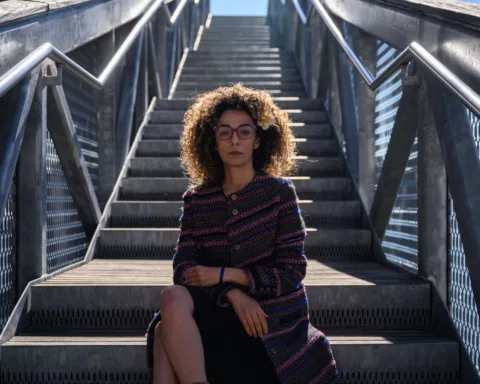People in the western Iranian city of Sanandaj, the capital of Kurdistan Province, took to the streets for the second night in a row on September 18 to protest the death of Mahsa Amini, a 22-year-old woman who died on September 16 just days after being taken into police custody for allegedly breaking the country’s hijab rules.
Amateur videos posted online purported to show a group of women among the protesters taking off their hijab and chanting “Death to the dictator” in an apparent reference to Supreme Leader Ayatollah Ali Khamenei.
Police reportedly fired shots in the air and used tear gas to disperse the protesters. According to the Hengaw Organization for Human Rights, which monitors Kurdish-inhabited areas in western Iran, security forces also using a water cannon to disperse protesters.
At least nine protesters have been reportedly injured in Sanandaj.
The protest came three days after doctors declared Amini dead on September 16 after she showed no brain activity since falling into a coma after being admitted to the hospital.
According to reports published on social networks, Amini had traveled from the western Iranian province of Kurdistan to Tehran to meet relatives when she was arrested by the morality police on September 13.
Eyewitnesses to her arrest told journalists that Amini appeared to have been beaten inside the police van while being taken to the detention center.
Iranian police said on September 19 that Amini’s death was an “unfortunate incident” that they do not wish to see repeated.
Interior Minister Ahmad Vahidi has claimed Amini had a previous illness and that the hijab police “basically do not have the tools to beat the detainees.”

But businesses and shopkeepers in cities in the provinces of Kurdistan, West Azerbaijan, and Alborz went on strike and closed their shops in protest of Amini’s death despite threats by authorities.
The notorious Guidance Patrols — otherwise known as the morality police or hijab police — have become increasingly active and violent in Iran. Videos have emerged on social media appearing to show officers detaining women, forcing them into vans, and whisking them away.
The hijab, the head covering worn by Muslim women, became compulsory in public for Iranian women and girls over the age of 9 after the 1979 Islamic Revolution.
Many Iranian women have flouted the rule over the years and pushed the boundaries of what officials say is acceptable clothing.






